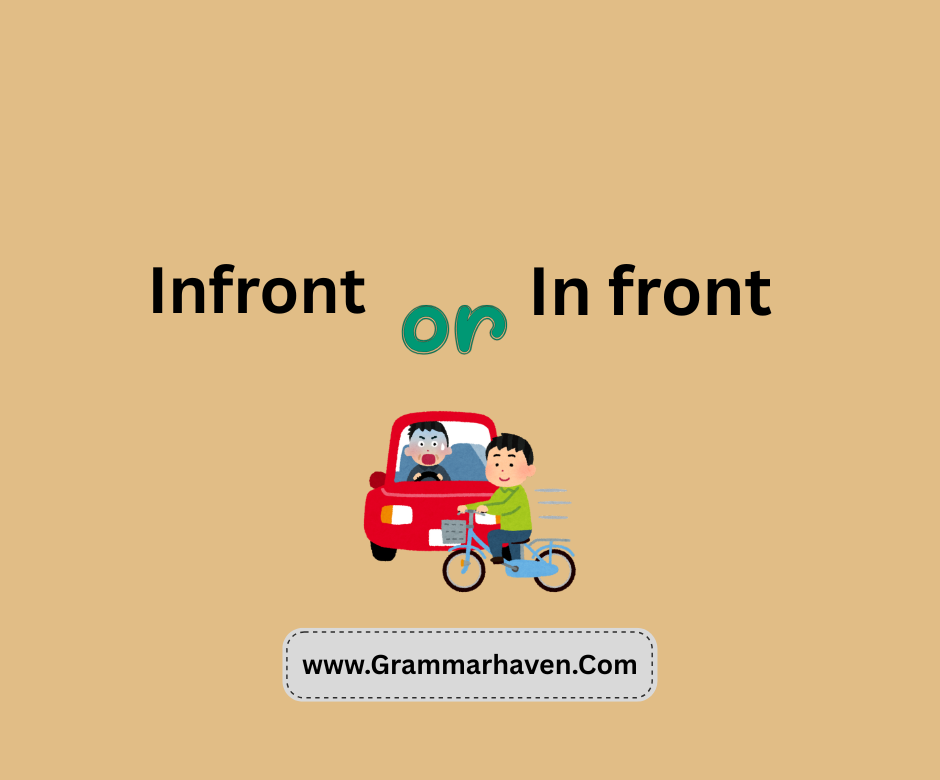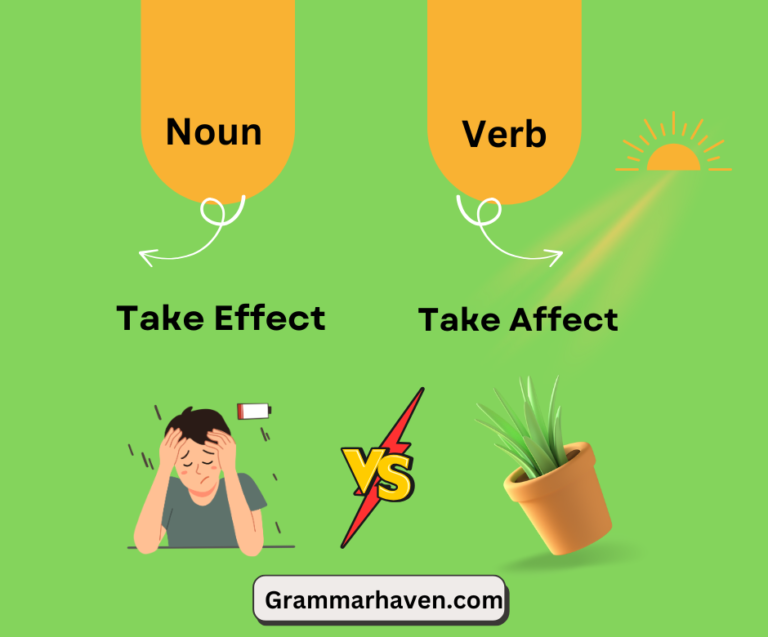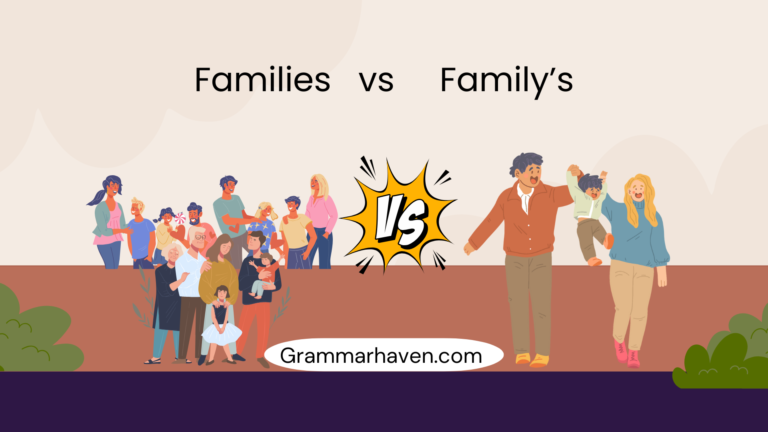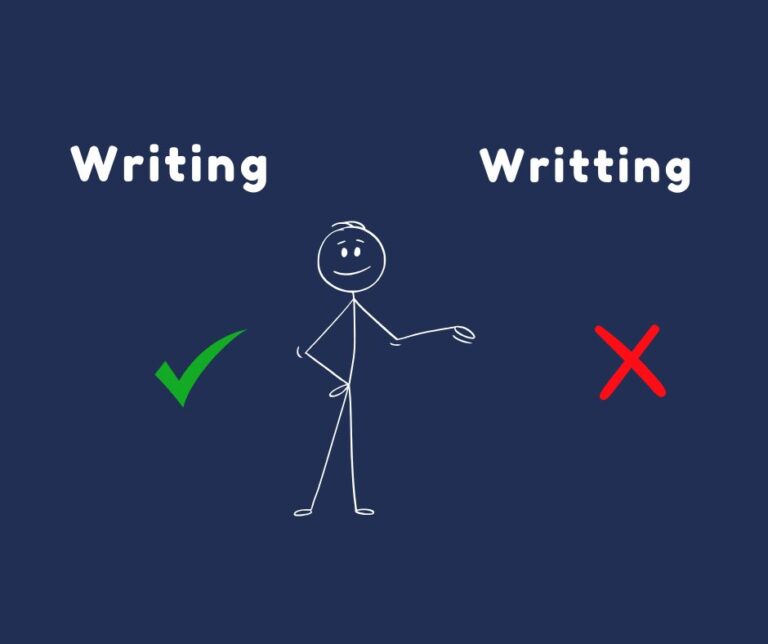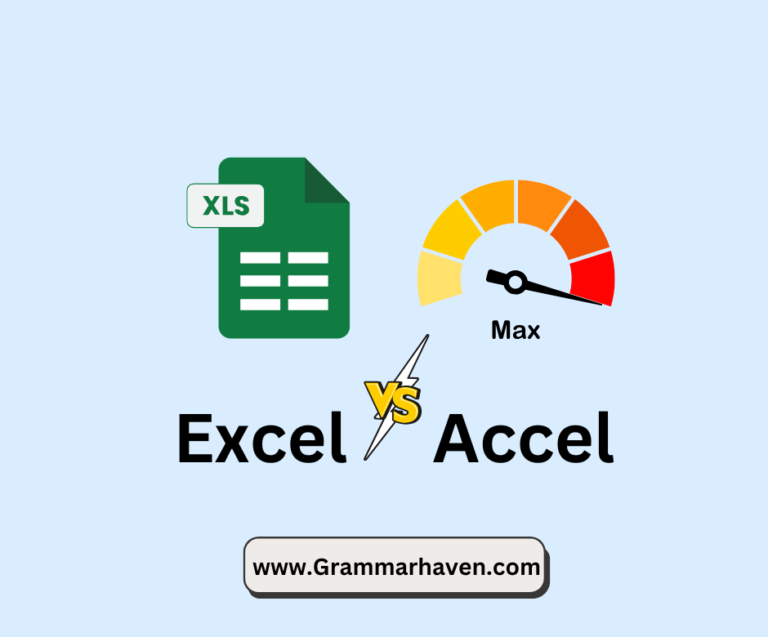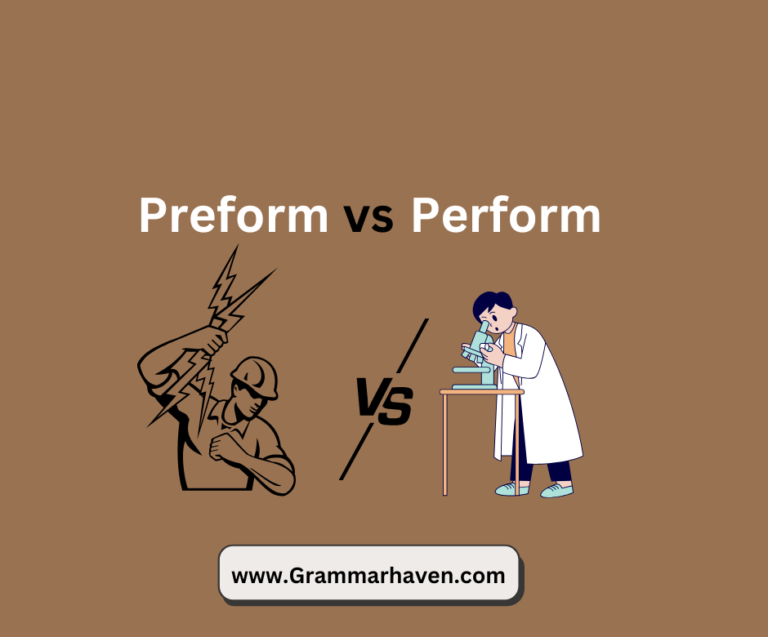Infront or In Front: Learn the Correct Usage
Infront or In Front :“In front” is a prepositional phrase. It means that something is positioned ahead of or before something else ,while” infront” is just a misspelling of the term “in front.”Have you ever typed “infront” and wondered if it’s right?. This common spelling mistake is something many people make, especially in casual communication. But when it comes to formal writing, emails, or school assignments, using the correct form matters a lot. In this article, we’ll explain whether it should be “infront” or “in front,” why the confusion exists, and how to use it correctly.
Is “Infront” a Real Word?
Let’s clear it up right away: “infront” is not a recognized word in English.
Major dictionaries like Merriam-Webster, Oxford, and Cambridge don’t list “infront” as a valid entry. It is a common misspelling of the correct phrase “in front”, which consists of two separate words. Spell-checkers and grammar tools often flag “infront” as incorrect for this reason.
Meaning and Correct Usage of “In Front”
“In front” is a prepositional phrase. It means that something is positioned ahead of or before something else ,while” infront” is just a misspelling of the term “in front.” In front is a prepositional phrase made of two words:
- “In” (a preposition)
- “Front” (a noun)
Examples:
- She parked her car in front of the store.
- The children stood in front of the stage.
- He placed the chair in front of the desk.
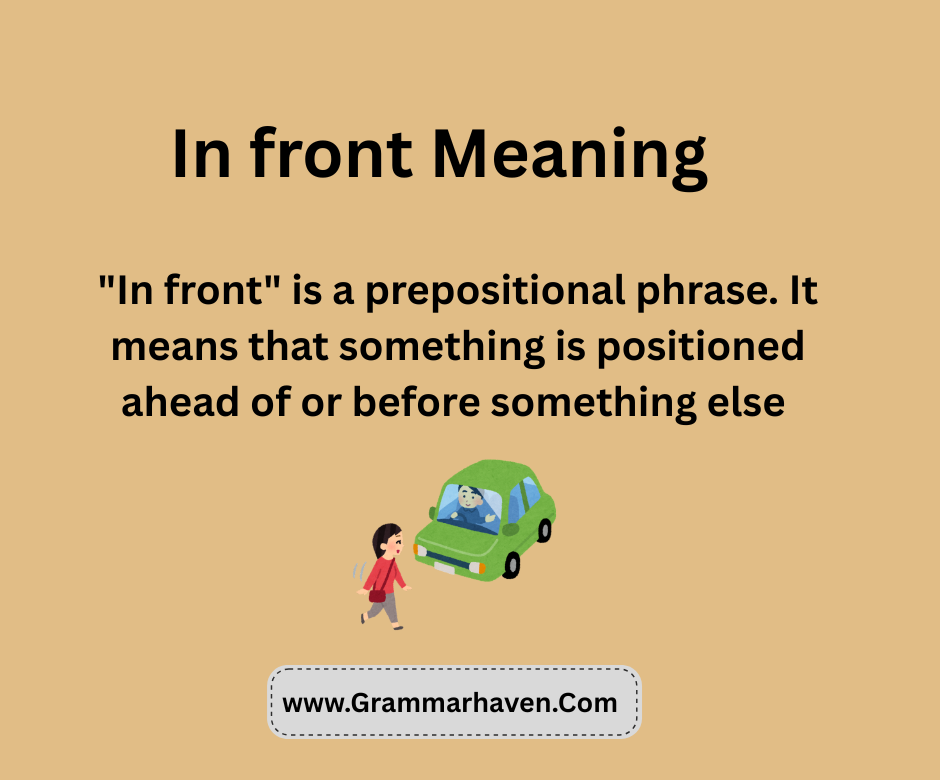
What does Infront mean?
There is no official meaning for the word “infront.”
“Infront” is a common spelling mistake. It’s not found in dictionaries like Merriam-Webster, Cambridge, or Oxford, and should be corrected to “in front.”
Visual Examples of Infront or In front in Everyday Sentences
Let’s have a quick comparison to remember the correct usage:
| Incorrect | Correct |
| He stood infront of me. | He stood in front of me. |
| The car is parked infront of the house. | The car is parked in front of the house. |
| We waited infront of the gate. | We waited in front of the gate. |
Using visual cues or diagrams in content (e.g., showing a person standing before a door labeled “in front”) can also help reinforce the correct usage.
Why Do People Confuse “Infront” With “In Front”?
There are a few reasons why people mistakenly write “infront”:
- Phonetic similarity: It sounds like one word.
- Autocorrect errors: Some mobile devices might not flag “infront.”
- Fast or informal typing: Especially on social media or messaging apps.
- Lack of awareness: Many learners of English simply don’t realize it’s incorrect.
Common Phrases Using “In Front”
- Right in front of me
- In front of the line
- Stand in front of the mirror
- In front of everyone
- Sit in front of the computer
These expressions are common in both written and spoken English and reinforce that “in front” is the proper form.
Just like choosing the correct form between “infront” and “in front” reflects your attention to language accuracy, understanding whether to write “skill set” or “skillset” showcases your grasp of professional terminology. Both examples highlight how small differences in spacing can change the correctness or clarity of your writing.
Which is correct, at the front or in the front?
Both “at the front” and “in the front” are grammatically correct — but they are used in slightly different contexts, and choosing the right one depends on what you’re describing.
Let’s discuss in detail:
“At the front” – Most Common
Used for: Positioning something/someone relative to a place or group.
Focus: External position or location.
Examples:
- He stood at the front of the line.
- The teacher is at the front of the classroom.
- There’s a sign at the front of the building.
“In the front” – Also Correct, but More Specific
Used for: Refers to the inside of something that has a front section.
Focus: Internal location or part of something.
Examples:
- He sat in the front of the car.
- The luggage is in the front of the bus.
- Her seat was in the front row.
Think: Inside a structure, vehicle, or area with front and back divisions.
Summary Table:
| Phrase | Best For | Example |
| At the front | Position relative to a place (outside edge) | She stood at the front of the hall. |
| In the front | Position inside something (interior section) | He sat in the front of the van. |
Usage of in front vs infront in British vs. American English
Whether you’re writing for an American or British audience, “in front” remains the same. Both use “in front” as two separate words. So, there’s no regional difference in spelling or usage here.
The confusion between “infront” and “in front” is similar to the mix-up between “tweak” or “tweek.” In both cases, one is a correct, standard term (“in front” and “tweak”), while the other is a common misspelling that can hurt the credibility of your writing.
“In Front” vs. Other Directional Phrases
To give readers more clarity, here are comparisons with similar expressions:
- In front vs. ahead: “Ahead” usually refers to progress or movement (e.g., Drive ahead), while “in front” indicates position (e.g., Parked in front).
- In front vs. before: “Before” can refer to time or order. “In front” is about physical placement.
- In front vs. opposite: “Opposite” suggests facing from the other side; “in front” means directly ahead.
In Front in Professional and Academic Writing
Using “infront” instead of “in front” in business or academic writing can hurt your credibility. Here’s why:
- It appears unprofessional
- It may confuse readers
- It can cause marks to be deducted in academic settings
Correct usage shows attention to detail and a good grasp of English.
Conclusion
Among infront or in front ,the correct spelling is always “in front” — two words. While “infront” may appear in texts or social posts, it’s best avoided in any formal or professional context. Use this guide as your go-to reference whenever you’re unsure. Precision in language builds trust and clarity — and now, you’re one step ahead.
FAQs
What is front in grammar?
In grammar, “front” usually refers to the beginning part of a sentence or a phrase. It’s commonly used in prepositional phrases like “in front of” or “at the front” to describe position or location. As a noun, “front” means the forward part of something, and in grammar discussions, it often points to where certain words or elements should appear in a sentence—usually at the start.
Q: Is “infront” grammatically incorrect?
Yes. It is not recognized by English grammar or dictionaries.
Q: Can I use “infront” informally?
Even in casual writing, it’s better to use the correct form.
Q: What are some tips to remember “in front”?
Think of it as a phrase like “in line” or “in place” — the word “in” always needs a space before the noun.
Q: Are there exceptions where “infront” might be used?
Some brand names or usernames use “infront” creatively, but it’s not grammatically correct in writing.

